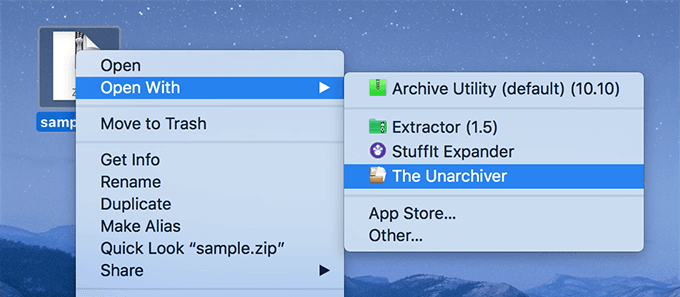
Since macOS is based on Unix there are a number of ways to compress files and folders within the filing system using Unix based application code, below are a few options using the Terminal or command line interface (cli). The default command line application interface in macOS is the Terminal and is stored in /Applications/Utilities.
Use the -s switch on the zip command in terminal. So if your folder was called FolderName. Zip -r -s 64 archive.zip FolderName/. 64 is the size of the split (in this case 64Mb). Use -s to set the split size and create a split archive. The size is given as a number followed optionally by one of k (kB), m (MB), g (GB), or t (TB) (the default is m). To create a split Zip file, you would need to: Create a new Zip file or open an existing one in WinZip. Click the Tools tab and click Multi-Part Zip File. Type the name for your split Zip file and choose a target folder. Note: The name must be different from the name of the open Zip file. Click OK to create the Split Zip file. Thankfully, the clever little ZIP utility has a handy function that can split our archive into smaller chunks for later re-assembly. Here’s how it works: zip -r -s 200M archive.zip myfiles/. This will create an archive of all files and subfolders in myfiles, creating a new file every 200MiB (about 10% more than 200MB).
File and folder compression saves on file size and ensures the contents are captured and delivered or stored as one monolithic file. A compressed file which contains files and folders is generally referred to as an archive. Here are some built-in compression applications you can use including zip, tar, gz, bz2, gz and dmg.
ZIP – Cross Platform
First up is ZIP one of the most commonly used compression techniques used across all platforms
If you want to make a zip without those invisible Mac resource files such as “MACOSX” or “.Filename” and.ds store files, use the “-X” option in the command so: zip -r -X archivename.zip foldertocompress TAR.GZ – Cross Platform. These files, which can contain settings for certain apps or parts of the Mac, contain a dot (.) before their names, and the Finder doesn’t show them. You can copy or move multiple files using.
To compress
To extract
If you want to make a zip without those invisible Mac resource files such as “_MACOSX” or “._Filename” and .ds store files, use the “-X” option in the command so:
TAR.GZ – Cross Platform
Second up is TAR, an old favorite on Unix/Linux – you add the GZ for the compression – compresses tighter than zip
To compress
To extract
TAR.BZ2 – Cross Platform
A variation on TAR GZ but with better compression than both tar.gz and zip.
To compress
Mac Terminal Zip Multiple Files In Linux
To extract
GZ
Without the tar
To extract
DMG – macOS Only
Mac Terminal Unzip All Files In Folder
This one is macOSnative only – for a GUI interface use /Applications/Utilities/Disk Utility – for command line use:
To create
To mount
To view
To Eject
You can also use a number of different formats for creating a .dmg
- UDZO – Compressed image (default)
- UDRO – Read-only image
- UDBZ – Better compressed image
- UDRW – Read/Write image
- UDTO – DVD disk image
That’s the low down, the more common compression packages available will typically be covered in one of the above.